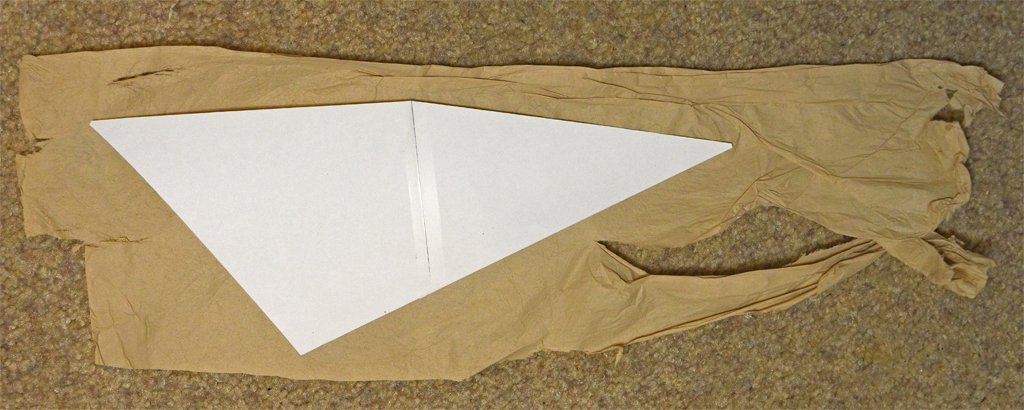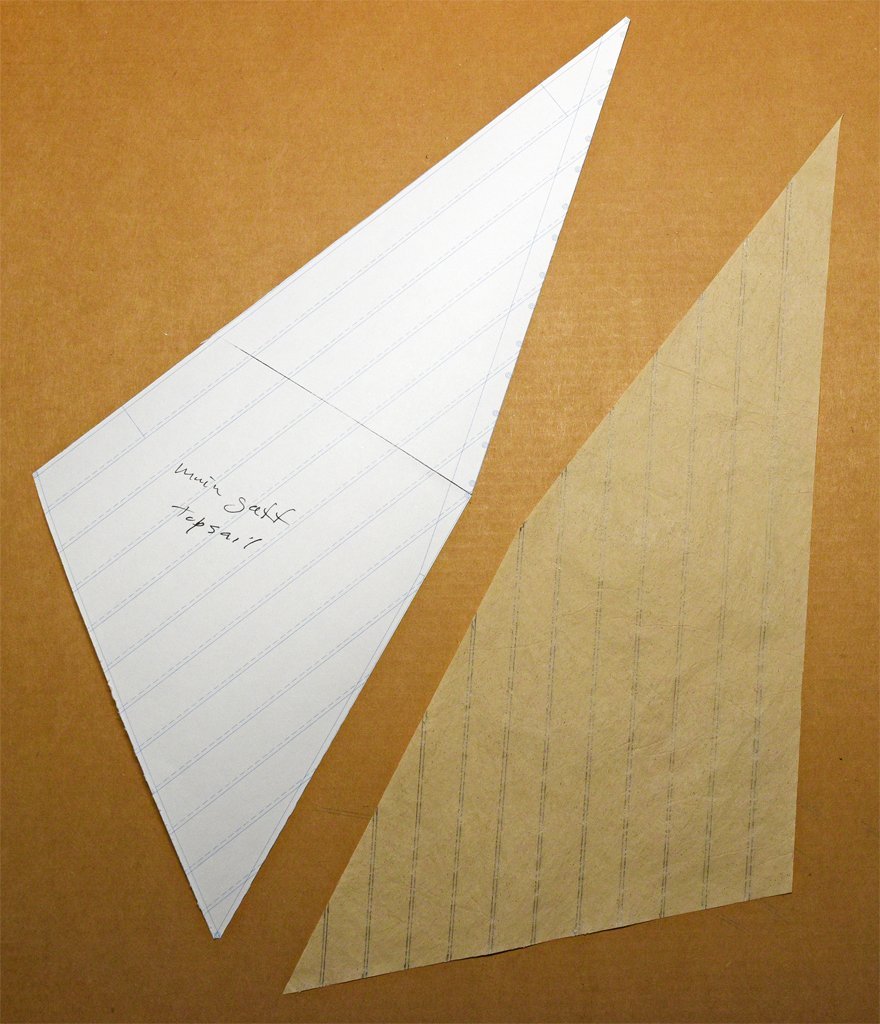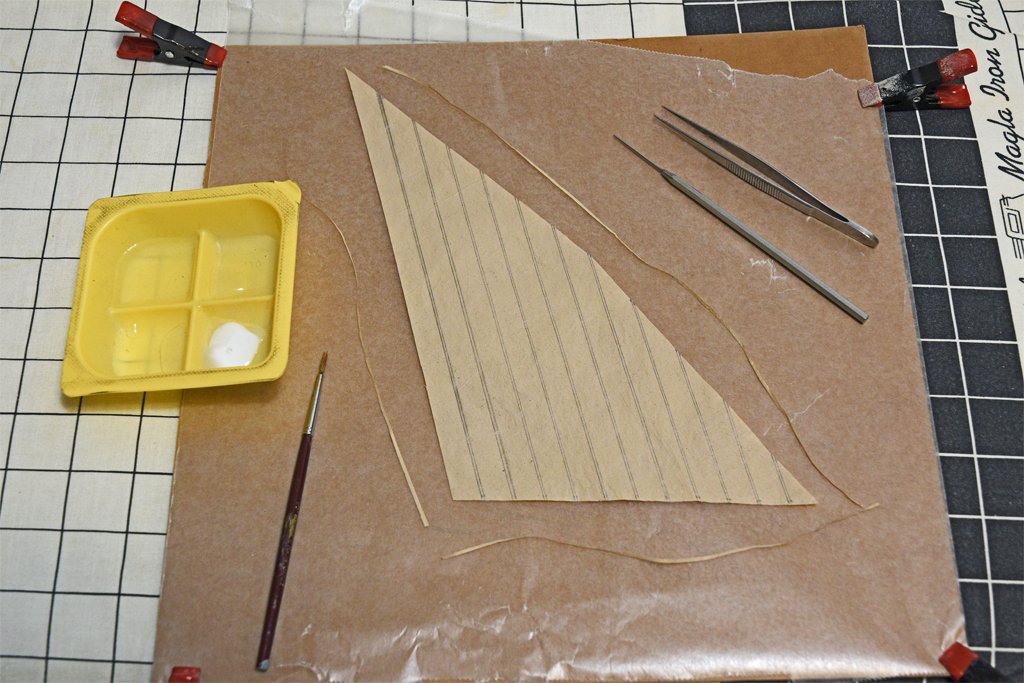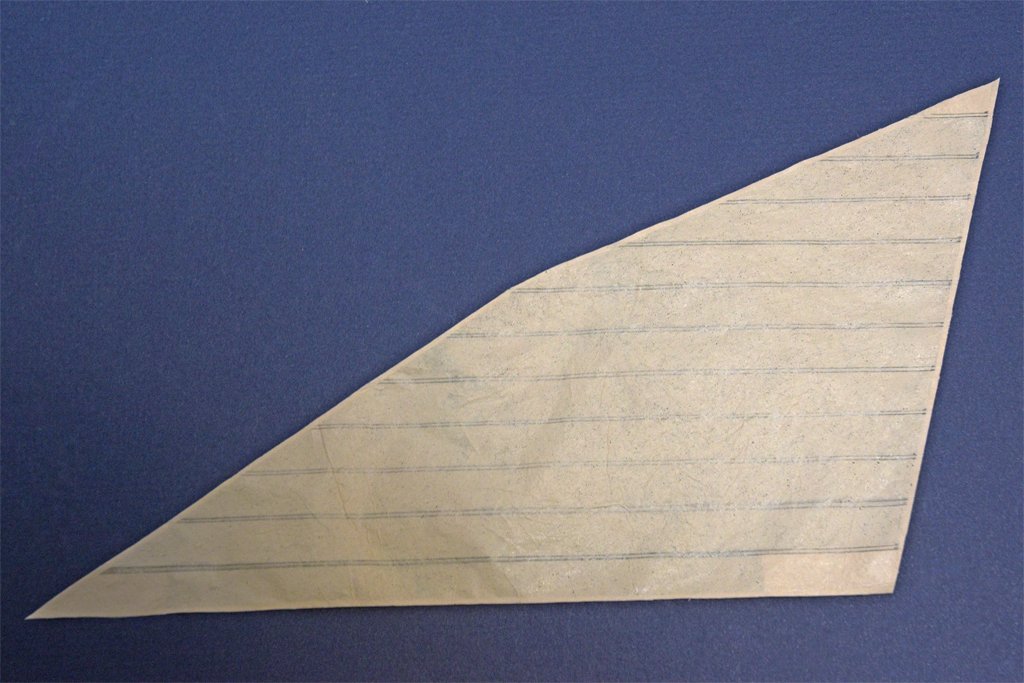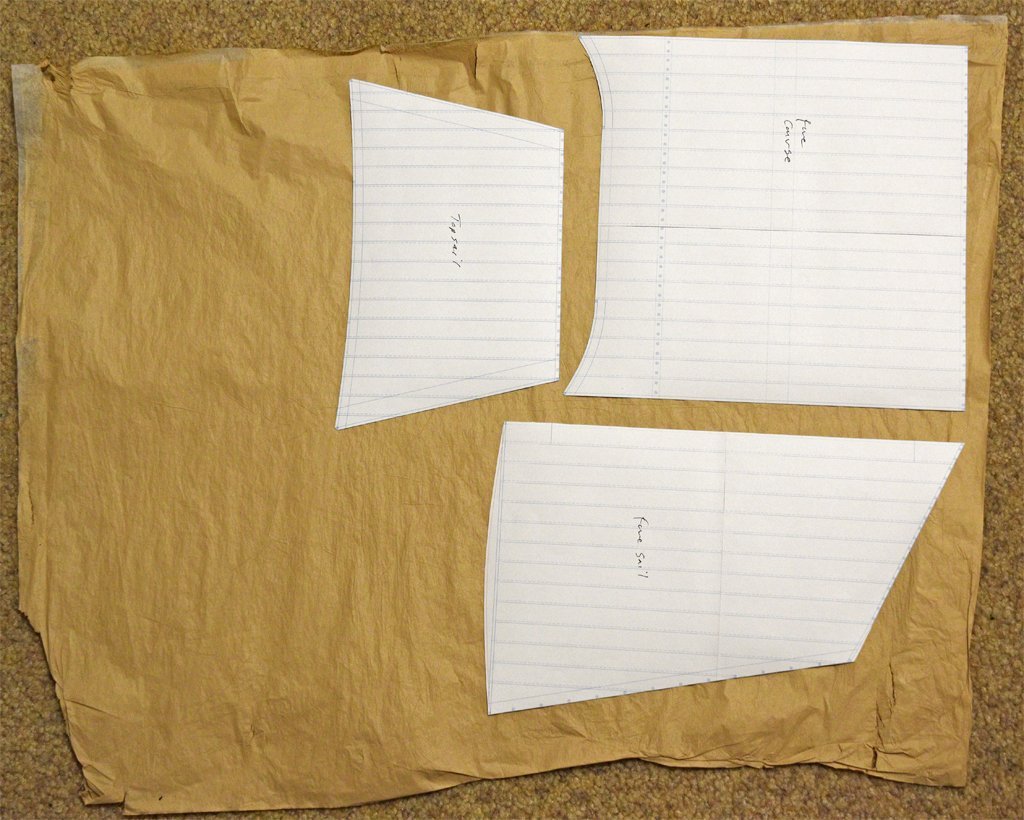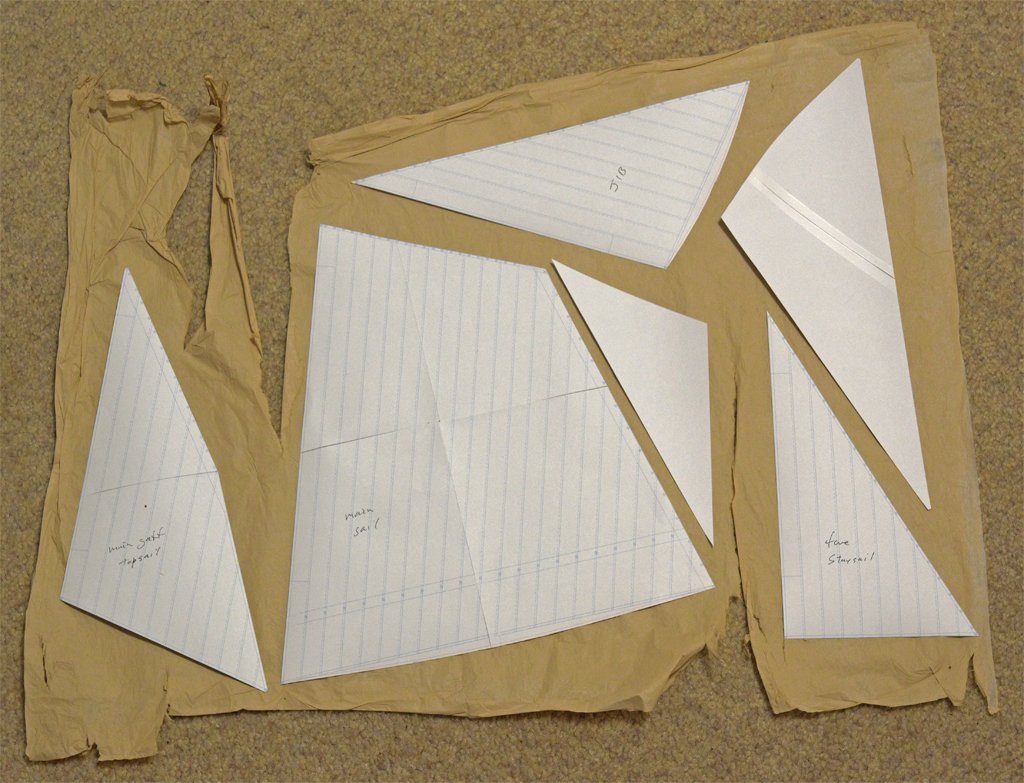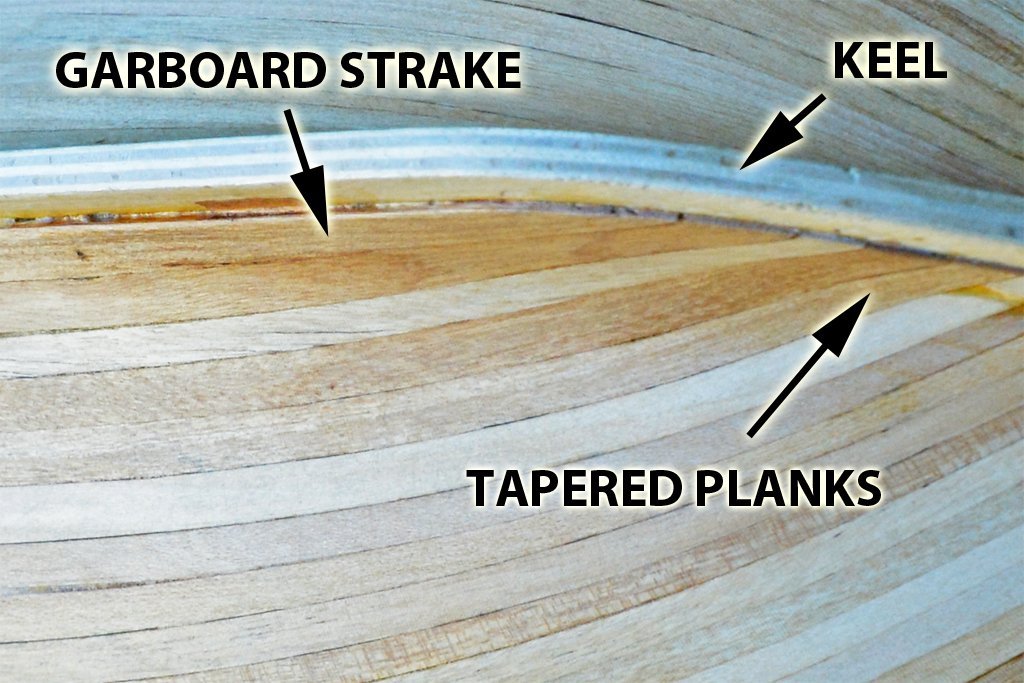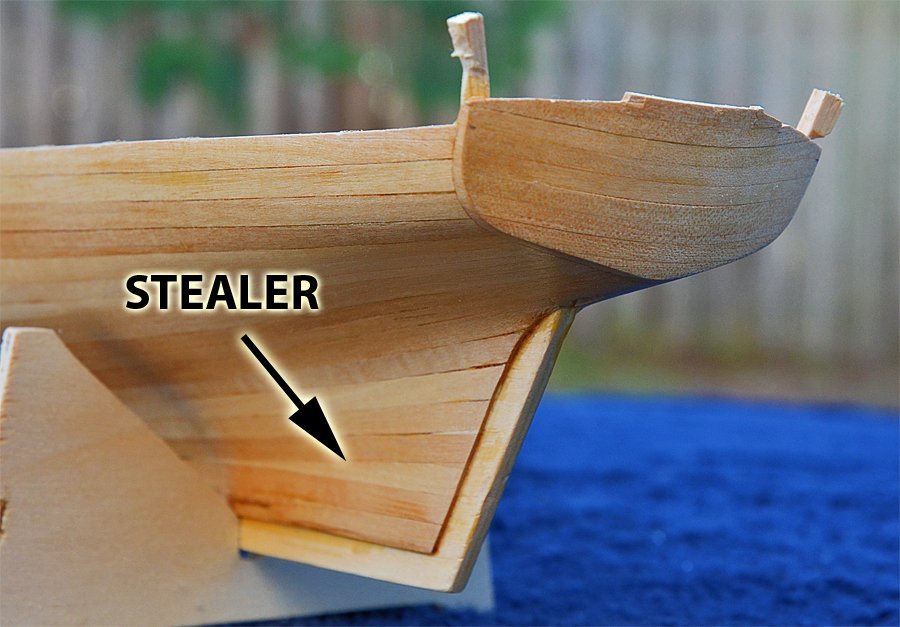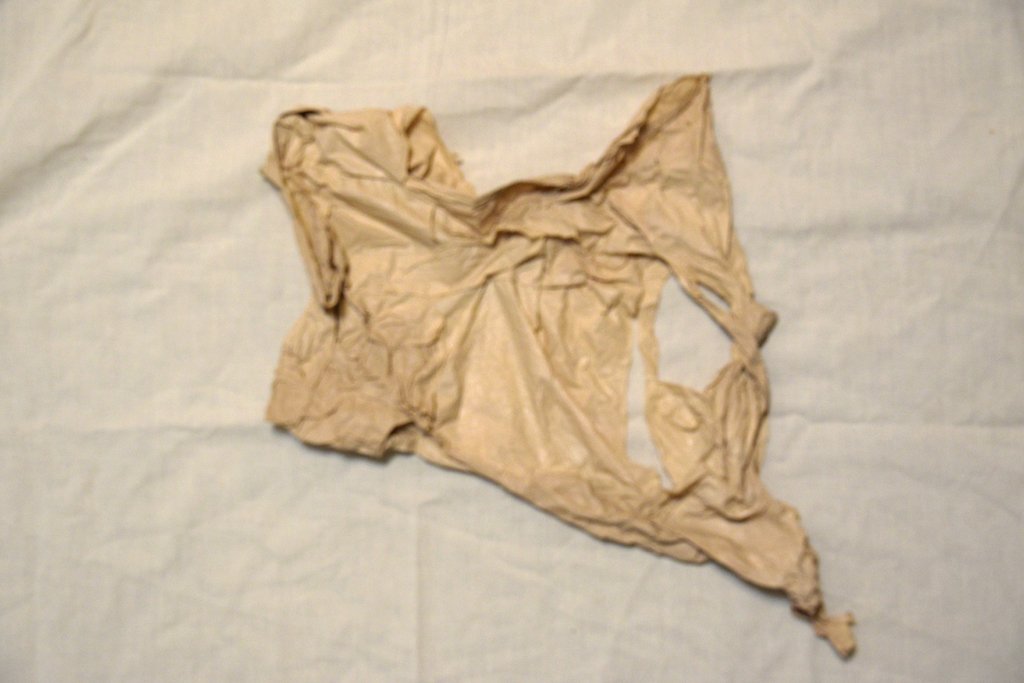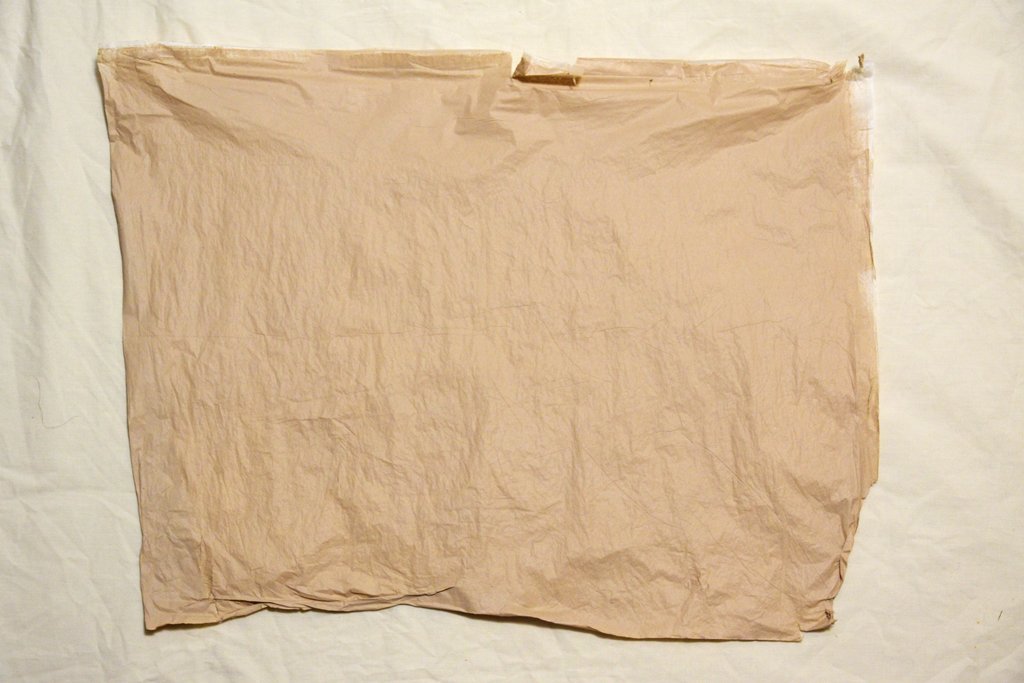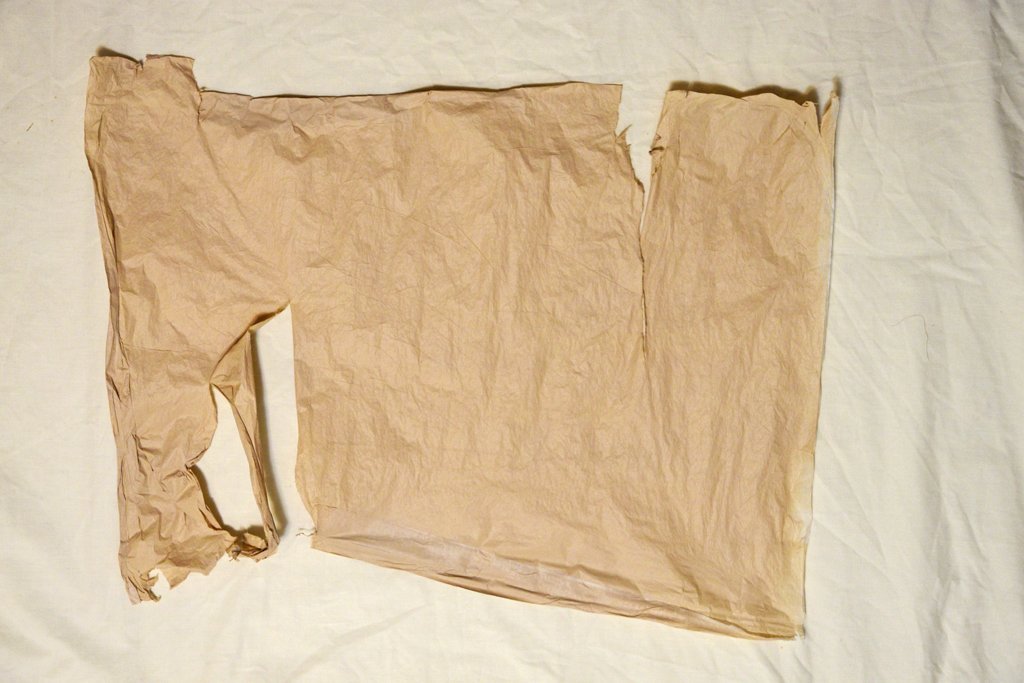-
Posts
2,438 -
Joined
-
Last visited
Content Type
Profiles
Forums
Gallery
Events
Everything posted by Dr PR
-

Ship Ribbing with CAD?
Dr PR replied to Sanjith_D's topic in CAD and 3D Modelling/Drafting Plans with Software
I have to disagree about the accuracy of 2D drawings, and restate what Terry said. You can draw nice 2D frame/station drawings, but you have no way to tell if they will produce a smoothly faired hull surface. Even working from a Table of Offsets will not guarantee frames/stations for a smooth hull. I have done this several times, and when the 2D frame/station drawings are erected in 3D the resulting hull surface is often wavy. -

Laptop recommendations?
Dr PR replied to Mike Shea's topic in CAD and 3D Modelling/Drafting Plans with Software
Mike, If all you wanted to do was use email and browse the Internet just about anything would do (even a cell phone). But if you are thinking of doing CAD work a higher clock speed (3+ GHz) and more cores (6+) is better. A video system that supports hardware acceleration (and the software drivers to work with it) is a plus. If you are going to do a lot of photo editing and storage more storage space will be needed (1 Tbyte or more). **** A fundamental problem with laptops is heat. All that electronics generates heat, and laptops have a totally inadequate cooling system. So when the processor and power supplies heat up the processor shuts down momentarily to let the cooling system catch up. So even the fastest clocked processors can end up running at a snails pace. Before buying read the reviews on line. Remember that 25% of the reviewers are morons who can't (won't) read and understand instructions and maybe 10% really know what they are talking about. But if a product has less than 70% 5 and 4 star ratings it is probably junk. -
The metal tube doesn't extend very far up into the handle. Be careful putting any strain on the handle part of the pins. My experience with 3D resin printed objects are that they are very brittle and very fragile. It should be easy to break the handle off.
-
As I understand it the term "knighthead" originated for any timber that had a fancy carved head or figure on the top. "Bitt" is a term that applies to vertical timbers that provide places to belay lines. So a bitt can be a knighthead, but not all bitts are knightheads. The rigging arrangement in the drawing in post #5 is a "whip on whip" tackle. A single block with one line fastened (the standing part) and one line running (the fall) is a whip tackle. Pulling on or letting out either fall will raise or lower the yard. Working both falls at the same time just raises or lowers the yard faster. And two lines allows twice as many people to work where deck space is limited. One of the lines from the lower block is the "standing" part that would be fastened to a cleat or eyebolt - the one on the bitt/knighthead would work. The other two lines are "running" lines that could be passed through sheaves in the bitt/knighthead and then belayed somewhere nearby. As Bob said, running the lines through the sheaves in the bitt/knightnead allows them to be pulled on horizontally to raise or lower the yard. The same redirection can be accomplished with a single "runner" block attached to a ring bolt on deck (or anywhere else) and running the fall from a tackle through the runner block.
-
It's funny how some people complain about the government as "Big Brother" when it really is companies like Apple that are the problem. They spy on you 24/7 to record everything you watch or listen to and purchase, and tax you any time they want to without any public input. Orwell was right about Big Brother, but he just picked the wrong villain.
-
Seal the wood before painting! Water based paints like acrylics raise the wood fibers and leave a "fuzzy" surface. A good sealer is shellac. You can paint over it with any paint. It dries quickly. Sand smooth with fine sand paper. Brush off sanding dust and grit and apply a second coat of sealer. Sand again and then finish with #0000 steel wool. BUT You must clean the surface after using steel wool - the tiny particles can rust and discolor the finish. I brush the hull first, and then rub down with a clean dry rag. I also have a 1 inch (25 mm) "U" magnet to pick up steel wool lint from the model surface and work bench. You can also use the fine steel wool on a coat of thoroughly dried paint to produce a "satin" finish. Some instructions say acrylic paints dry in an hour or less. They will change from "wet" as you paint to "dry" that is no longer runny, but it will still be soft and easily damaged. It may take a day or two for the acrylic material to harden, and a week or more to attain full hardness. It is OK to apply a second thin coat over an initial thin coat when the first coat is "dry," but wait a day or two before sanding.
-
For me Marquardt's The global Schooner is a must have book for working on schooners. It is a "Lees" for fore and aft rigged vessels.It has some history, but much of the book is about howfore and aft craft were built and rigged, and the appendices have a lot of tables of historical data.
-
Steve, 1. More belaying points is better than not enough! 2. I think you are correct that the spaces between pins should be over the gun ports. When the cannons recoil you don't want them hitting belaying pins. 3. Take what I have said in my build with a grain (or spoonful) of salt. It is a hypothetical build, so I can do whatever I can imagine. I am building that schooner to learn about schooners, and not to build a correct replica of any particular vessel. 4. With very few exceptions, we are never going to know exactly how any particular historical vessel was rigged, especially from times before photography and modern engineering practices. My philosophy is to put myself in the bosun's shoes - how do I make this work so the Captain doesn't chew my posterior? **** I wasn't around centuries ago, but I did my time on ships in the mid 20th century. Whenever the ship's bosun decided he needed a new belaying point - a cleat or bollard - he talked to the chiefs in engineering and soon a new fixture appeared. Sometimes he took a five pound can of coffee from ship's stores over to a friend in the shipyard and came back with what he wanted. And for something really big a canned ham would usually do the trick. Official blueprints weren't needed. Where there was a will there was a way!
-
Karl Heintz Marquardt's The Global Schooner (Chapter 1, Origin of Schooners) shows numerous examples of this "bermuda rig" dating from a 1526 Spanish account of a Peruvian raft, and a Dutch sketch of one of these rafts from 1615. The Dutch were building similar two mast triangular sail torentuig rigged vessels in the early 1600s, and possibly introduced it into the Bermudas in the 1620s. By the late 1620s the Dutch had developed a refined version called the speljacht. It is suggested that these vessels might be the origin of all schooners in Europe and then the Americas.
-
Steve, You are making good progress. I have been working on the rigging and belaying plan of my topsail schooner model for some time, and routing the lines without any fouling is tricky! Chapelle's The Search for Speed Under Sail (W. W. Norton & Company, New York & London, 1967) has a two page drawing of the Prince de Neufchatel sail plan, including a belaying plan, between pages 229-230. It is pretty small print but I can read it clearly with a magnifier. This is very rare! Most sail plans just show lines going down to deck somewhere. Few plans actually show where the lines belay. He shows nine pins forward and five aft (9-5) of the gun on the aft pin rail, and 4-8-3 (fore to aft) on the forward pin rail.
-
Jsk, I have heard of using coffee filters (and tea bags) for parts of models (like tarpaulins over hatches). I just measured the thickness of an ordinary coffee filter paper, and it is 0.0005 inch (0.0127 mm)! That is thinner than the silk span, and would be closer to scale for sails on 1:64, 1:75 and 1:96 or 1:100 scale models. The only problem I see is that the filters I have are too small for any of the sails on my 1:48 model. But if you can find sheets of coffee filter paper (I'll bet artists use it for something) I can see no reason not to use it. Come to think of it, we did have large sheets of filter paper of several different grades (thicknesses) in our chemistry labs in college, so it is probably available through chemistry supply companies. Paper chromatography paper is similar to filter paper.
-
Gregory, I glued two pieces of parchment paper together with white glue and then clamped them together. After about eight hours I removed the clamp and the two pieces pulled apart with almost no force needed. I think parchment paper has another advantage. The wax on waxed paper melts when heated and sticks to the sail material (and probably the iron). I suspect this is part of the problem with the tabling material lifting off the sail with the waxed paper that Lauria mentions. Also, when I used waxed paper under the sail to prevent the glue from binding to the cardboard work top the sail stuck to the waxed paper sheet (but not very tightly). I will use parchment paper instead of waxed paper for making the next sails. Note: I did use parchment paper and it worked as well as or better than waxed paper.
-
Gregory, I was wondering that myself. I have a roll of parchment paper in the drawer with the waxed paper. The virtue of waxed paper is that the glue isn't supposed to stick to it. The white glue doesn't actually glue to the waxed paper because it can't soak in, but it does adhere loosely. I'll have to experiment with the parchment paper.
-
Here is my first attempt to make a sail. First I arranged the sail templates on the two usable sheets of sail material. Then I cut off one of the ragged sides of the second sheet where the template for the main gaff topsail fit. Here is the sail piece and template after trimming the sail from the sheet. My first mistake was failing to draw on the cloth lines before cutting the material from the sheet. It probably would have been easier to draw the sail outline and cloth lines on the sail material sheet before cutting the sail from the sheet. This is what Tom Lauria suggests. I just aligned the template edges with the sail edges and drew tic marks where the lines should terminate. Then I penciled in the lines with a mechanical drawing pencil, using #2 lead. A drawback to this method is that the tic marks are visible on the sail after the lines were drawn. I also discovered that even though the sail material is very thin and easy to wrinkle I could erase the lines I screwed up and draw them again. There were a couple of opportunities for that experiment! The dry sail material is pretty tough and I have seen no tendency to tear. One slight variation from Laura's procedure was cutting the tabling strips from along the edge of the hole where the sail piece had been cut out. He just cut a bunch of narrow strips from an unused part of the sail material sheet. Here is the work area for gluing the tablings and linings to the sail. The plastic tray held white glue (school glue, Elmer's glue, etc.) and water. I used a fairly narrow paint brush. Tweezers were necessary for handling the thin tabling strips and the lining pieces. I also had a thin probe to help lift stray ends and realign them. One thing I did different from Lauria's tutorial was to cover the work area (a sheet of cardboard) with waxed paper that was clipped to the corners of the cardboard. I was worried that the glue would stick the sail to the cardboard. The waxed paper worked well to prevent this. Here is the "finished" sail ready to add the bolt ropes. The material is slightly translucent, and against the dark background you can see the linings at the corners (on the back or port side of the sail). The thin tabling strips are visible along the sail edges on the starboard side of the sail. After it has dried overnight I will iron the sail again to take out wrinkles. (It ironed out perfectly smooth the next morning!) One thing about this process that isn't clear from Lauria's video is whether the white glue was diluted before using. He used a wet brush dipped into the glue, so in that respect the glue was diluted. This was a good thing because it delayed the drying of the glue to allow things to be moved into position. But the strength of the glue was unpredictable, depending upon how wet the brush was and whether the glue was becoming diluted from the water on the brush as it was dipped into the glue. Sometimes the glue was thicker than at other times. I am concerned that in some places the glue was too watery and the pieces may not remain glued together. I may try just using diluted glue (1:1 with water). I did have a few problems. First off I got glue on my finger tips and then they stuck to things I didn't want to pull on. I kept a paper towel close by to wipe my fingers on. The long tabling strips were a bit unwieldy and tended to go out of line or settle with raised sections. It was easy to correct this using the metal point or just the tweezers to fit in under the wayward portions and pull them straight. I did use a piece of waxed paper on top of the glued sections as I heated them with the iron. I guess I was using too much glue because I had the same problem Lauria demonstrated in his video. The tabling strips often stuck to the piece of waxed paper as I lifted it. With practice I learned how to lift the paper from the appropriate direction to avoid this problem. But another problem I saw arose from the extra glue on the lower sheet of waxed paper after I painted a line of glue along the edges of the sail. This glue tended to glue the sail to the waxed paper after I had heated the area with the iron. So after each tabling I wiped the waxed paper sheet with the paper towel to remove glue. All part of the learning curve!
-
Do you ever buy from McMaster-Carr? It is an industrial supplier but they sell small quantities to hobbyists too. I have been purchasing from them for decades. Top quality items at prices better than you find in hobby shops (if you can still find a hobby shop). They have quite a selection of plastic and metal stock for machining. The only shortcoming is that much of their stock is larger sizes and not the very small things for modelling. https://www.mcmaster.com/products/rods/?s=plastic+rods Look around their site and you will find all sorts of useful things!
-
chickpeas, First of all, you shouldn't have planks coming up to the keel at an angle like you show in the picture. The first plank up from the keel is called the garboard strake. It runs parallel to the bottom of the keel, and is tapered to a point where it starts to curve up at the bow. Getting the right shape is important because it allows the next plank (strake) to run fairly straight without really sharp bending. Here is a drawing of a typical garboard strake from Donald Dressel's Planking Techniques for Model Ship Builders. This is an ideal shape for a vessel with a bluff bow, cut from a wider plank. The wider part at the stern (left in the drawing) allows the next plank up to fit easily without a gap. But if you are using the normal planks that come with the kit just taper the forward end to the point. You add a triangular "stealer" to fill any gap between your garboard strake and the next plank (see below). The garboard strake is a complex shape. The idea is to set the run of all the planks above it to require the minimum of bending and fitting. Dressel suggests a simple way to create the shape. Run a strip of masking tape along the keel, starting at the midships bulkhead. Put the top edge of the tape exactly one plank width up on the bulkhead. Then stick the aft end to the stern bulkheads, pulling the tape taught to get a straight edge one plank width up from the keel. Then carefully press the tape to each successive bulkhead toward the bow, allowing it to fall in a natural curve all the way to the bow. Now cut the tape on the bottom edge to follow the line where the bulkheads intersect the keel. You can lay a plank over the tape and jam it against the keel to guide your knife. Pull the cut tape off and you have the shape of the inboard side of the garboard strake. Because this plank must be beveled on the bottom edge to fit against the keel the outboard side will be a bit wider. This will require a bit of fitting by trial and error. Or you can just leave the edge proud as in the photo below and then add additional material to the keel later. Note: This is a hull I built about 40 years ago, early in the learning curve! Experienced builders will not think this is an especially good example of planking because all the planks do not taper the same amount. But if you are planning on painting the hull it won't matter. Some kits and essentially all scratch builds will cut a rabbet into the keel along the bottom edge of the garboard strake. This is a groove that removes material from the keel for the lower edge of the garboard strake to fit into without having to taper it or add additional material. After you install the garboard strake all remaining planks will fit more or less parallel to the garboard strake. Depending upon the shape of the hull (streamlined bow or bluff bow) you will have to taper each plank a bit at the bow to get them to lay flat without needing to twist them. The photos show a very streamlined tapered hull where the planking was pretty easy. Here is a photo of the stern showing how a triangular "stealer" was used to fill in the gap where planks wanted to spread apart because of the shape of the hull. Here the garboard strake just has the parallel edges from the original plank. This is just the beginning of planking fiddly bits. Ideally no plank will come to a sharp point (less than a 45 degree angle) and there are nibbing and hooking techniques to eliminate these points. That is something for more experienced builds.
-

Rigging Cutter Square Sail Sheets and Tack
Dr PR replied to Thukydides's topic in Masting, rigging and sails
Just a guess. The topsail has a deep arc cut into it to reach up and over the stays. This opening would let a lot of air pass through. The course yard is hauled up just below the stays, and the top of the sail fills the gap in the topsail. -
greenskin, I can't help you much here. I have no idea what the SIG 00 silkspan is supposed to weigh. But it is about 0.001 inch (0,00254 cm) thick, give or take a bit. 4 1/2 sheets weigh 1.3 ounces (38 grams) as measured on a kitchen scale (not a precision measuring device). That comes out to be 0.289 ounces (8,44 grams) per sheet. The sheets are 24 x 36.5 inches (60,8 x 92,6 cm) so the area is 876 in2 or 5630,08 cm2. The volume of each sheet is 876 in2 x 0.001 in = 0.876 in3 or 5630,08 cm2 x 0,00254 cm = 14,3004 cm3. So the weight is approximately 0.289 oz/0.876 in3 = 0.323 oz/in3 or 8,44 g/14,3004 cm3 = 0,59 g/cm3. I think the metric value is probably more accurate due to low resolution of the scales in Imperial units. **** There are several different materials sometimes called "silkspan" and some tissue papers that are similar weight. The actual silk products seem to fall into two categories - woven fibers and unaligned fibers. Real silkspan seems to be the later type with random fibers. That must be why it disintegrates so easily when wet. "Japan Paper" is a similar product, called "Papier Japoński" in Poland. There is a discussion of silkspan here: https://modelshipworld.com/topic/28459-what-is-silkspan/?do=findComment&comment=813999 **** Silkspan is very thin and translucent. Most modelers recommend painting the paper with a good acrylic paint to give it body, and this makes it opaque. As I mentioned in the edited post above, the material has a lot of small wrinkles when it dries after being painted. I ironed it with a dry iron (no steam) on the lowest heat setting and it smoothed out nicely.
-
I decided to try to prepare some silkspan for sails. I followed Tom Lauria's YouTube procedure in Making Sails for Ship Models From Silkspan. It looked pretty simple. I used a buff color acrylic paint to color the material and give it some "body." I cut the 36" x 24" silkspan material in half and worked with 18" x 24" (457 mm x 610 mm) pieces. I spread the material on a large plastic sheet and sprayed it with water. Then I rolled the paint onto the material until it was opaque. I attached clips to the corners as Lauria showed and then lifted the sheet off the plastic. It immediately, ripped, disintegrated and folded over on itself repeatedly! When I tried to separate the folded layers it tore some more. Here is the result: The photo isn't in sharp focus, but you get the idea. Not perfect! The wet silkspan disintegrated when I tried to lift the corners. When I did start removing the material from the plastic it ripped everywhere I pulled. I ended up with a soggy mess. I think it was a bad idea to spray with water first. The silkspan Lauria used may have been a better quality than the SIG 00 material I am using. OK. If at first you don't succeed ... I tried again, but without the water spray. But I did add a few drops of water to the paint to thin it a bit. The second attempt came out much better! The acrylic paint I used dried to the touch in an hour or so. The edges are a bit wrinkled and the corners are shredded, but I should be able to get several good sails out of this. I will need another sheet to finish them all. I repeated the steps used in the second attempt and got this result. Disappointing! Again, the damp material ripped as I tried to remove it from the plastic sheet. But there is a lot of usable material and I should be able to get the rest of the sails and the tabling and lining material from this sheet. Murphy really got in his licks on this job! I think with the SIG 00 silkspan it would be a better idea to hang it or put it in a frame and spray the paint on with an airbrush. But if you are persistent you can get usable sail material. After the paint dried the material was easy to handle and didn't tear. When I smooth it with my hands on a flat surface the wrinkles smooth out nicely. I am hoping that a warm iron will smooth out the wrinkles permanently. NOTE: After the material dried over night I ironed it with a dry iron (no steam) on the lowest heat setting. The wrinkles ironed out nicely leaving very smooth sail material! The dried material measures 0.001 inch (0.0254 mm) thick. This scales to 0.048 inches (1.2 mm) at 1:48 scale. So it is a reasonable scale thickness for sail material.
-
It's made from tough football helmet plastic!"
About us
Modelshipworld - Advancing Ship Modeling through Research
SSL Secured
Your security is important for us so this Website is SSL-Secured
NRG Mailing Address
Nautical Research Guild
237 South Lincoln Street
Westmont IL, 60559-1917
Model Ship World ® and the MSW logo are Registered Trademarks, and belong to the Nautical Research Guild (United States Patent and Trademark Office: No. 6,929,264 & No. 6,929,274, registered Dec. 20, 2022)
Helpful Links
About the NRG
If you enjoy building ship models that are historically accurate as well as beautiful, then The Nautical Research Guild (NRG) is just right for you.
The Guild is a non-profit educational organization whose mission is to “Advance Ship Modeling Through Research”. We provide support to our members in their efforts to raise the quality of their model ships.
The Nautical Research Guild has published our world-renowned quarterly magazine, The Nautical Research Journal, since 1955. The pages of the Journal are full of articles by accomplished ship modelers who show you how they create those exquisite details on their models, and by maritime historians who show you the correct details to build. The Journal is available in both print and digital editions. Go to the NRG web site (www.thenrg.org) to download a complimentary digital copy of the Journal. The NRG also publishes plan sets, books and compilations of back issues of the Journal and the former Ships in Scale and Model Ship Builder magazines.





